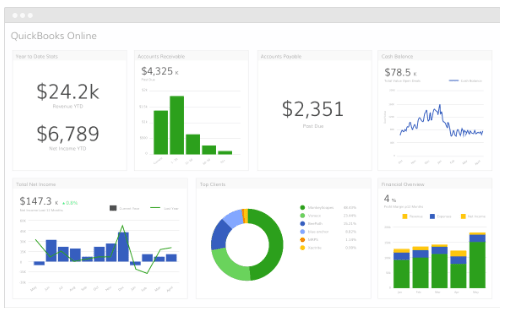Bookkeeping
Construction billing methods & best practices

It might be a good idea to follow-up on an invoice a few times before taking more drastic action. In the strong majority of states, conditional lien waivers can be used in order to assure a customer that they won’t have to pay twice, while also preserving the right to lien if something goes awry. By submitting a conditional waiver, no rights are waived until payment is made. At the same time, once payment comes, lien rights for that payment are permanently waived. Now, that doesn’t mean that substantial payment talks can’t happen in person, over the phone, or via text. But, some written records showing that payment was requested should be present – regardless of whether there have been any difficulties on the job.
Double check for double payments
Progress billing ensures that contractors have the necessary cash flow to cover these costs as the project progresses, rather than waiting for the full payment upon completion. Since billing methods in the construction industry take many different forms, it’s crucial to understand how different contracts https://www.bookstime.com/ operate. Mainly because different billing methods will affect your cash flow and decision-making in very distinct ways, making them an important part of your construction accounting process. Construction billing helps ensure the construction company receives a timely lump sum payment for its work.

So, Which Construction Billing Method Should You Choose?
- If you miss a measurement or have to go back and recalculate, your estimates can be severely off the mark.
- You should then prepare a well-thought-out budget that accounts for all costs that you expect to incur throughout the project.
- Be sure to send your invoices as quickly as possible (while still being reasonable).
- It’s important to read and fully understand the requirements for each billing to maintain good financial health on the project.
- Understanding the components of a construction invoice is key to ensuring that all parties involved have a clear understanding of the project costs and the services rendered.
- In a nutshell, progress payments are partial payments made during different stages of a project, based on the schedules included in the project proposal.
- By using a contingency fund, the contractor can cover the costs of some changes to the original scope of work.
Establish consistent payment terms such as fees, costs of labor and materials, the timing of invoices, proof of expenses, payment method, and the timeframe of when the client must make the payments. As the name suggests, time and materials billing invoices owners based on the number of labor hours on the project and the cost of the materials. In a time and materials contract, the contractor includes profit margins in the hourly prices quoted to the owner and the exact scope of work is not clearly defined or is expected to change. Construction projects take time, and because of that, they require significant upfront costs for labor, materials and equipment.
Photo Documentation
- It also promotes a steady cash flow stream, as you don’t need to wait until the end of the project to receive payments.
- If you use construction management software, this billing method can be extremely time efficient and ensure professional billing through an automated process.
- From here, you can apply markup and submit your proposal with a locked in price for the client.
- There are several billing methods available, each with its advantages and disadvantages.
- This is done in order to ensure that all work has been completed according to contract terms before final payment is made.
While there are scenarios where a cost-plus contract can help facilitate a successful project, entering a project without key information should be done with caution and under the right circumstances. Cost-plus can lead to disputes due to the unrefined nature of the agreements. For this reason, you’ll have to justify and prove that an expense qualifies for reimbursement.
Tread is a construction fleet management and dispatch software that speeds up invoicing and settlement processes. Tread helps facilitate faster money transfers on load-based and time-based jobs. Unclear invoices could be a result of illegible writing or a lack of detail. Inaccurate invoices can result from lost or misplaced time tracking sheets that were then estimated for invoicing purposes or when tracking job details manually by pen and paper. Advanced billing in construction is a method where payments are finalized before a project begins — usually in the form of a lump sum payment. When working with an owner for the first time, it can be difficult to understand what’s required for billing.
What’s in a construction invoice?

As mentioned earlier, GCs will have to send further documentation for their payment applications to be accepted. Keep in mind that many states require variable retention, meaning construction invoice that retainage is reduced or paid out once a certain percentage of the contract is completed. Within statutory requirements, contractors can typically negotiate retainage terms.
Free Template: How to Do a Construction Invoice

Only 43% of companies incentivize early payments or penalize late payments. This is a simple tweak to your payment terms that can expedite payments. Every construction business has its own invoicing practices, and everyone knows what works best for them.
- Especially with the convenience of cell phone photo quality, this step is an easy way to provide evidence if your company is facing a claim or dispute.
- For owners, the benefit of progress billing is that they don’t have to front all the money for a project before the project even begins.
- Having to pay a subcontractor within 30 days when a progress payment may not come for another two months could impact cash flow and prove detrimental to the project as a whole.
- Two benefits of this approach are greater transparency and a lower chance of cost overruns.
- In this section, we provide a detailed walkthrough for generating an invoice for construction work, highlighting the significant role that construction invoicing software plays in streamlining this process.
- If your payment is late and you have no indication that payment is on its way, don’t be afraid to check-in.
Construction Project Delivery Methods Compared
Mismanaging invoices can be detrimental to contractor’s financial position — and the overall success of a project. For instance, if the contract includes retainage, the owner or GC generally withholds 5-10% of the dollar amount from each progress payment. This practice often flows down to subcontractors and even sub-subcontractors. If subcontractors are unaware that retainage will affect their payment timeline, they may halt their work until resolving the dispute, thereby blocking other aspects of the project from completion.


 新景觀房
新景觀房